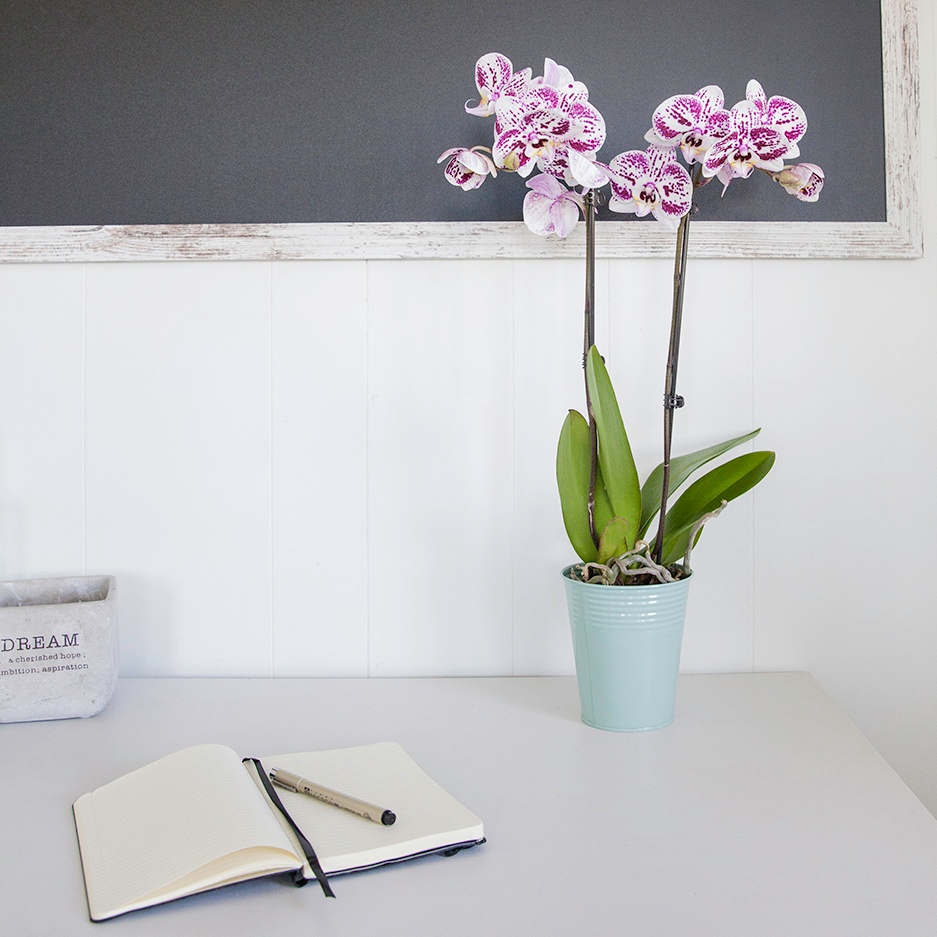
It’s a claim you’ve heard us make countless times: orchids are easy to care for. And it’s true — they are! Yet, even the lowest maintenance plants can lead to care mistakes. While some orchid care mistakes are minor and won’t affect the overall health of your plant, others could be damaging to growth and reblooming. Even worse, some mistakes can be lethal to your orchid.
That’s why today, we’re examining the four most common mistakes novice orchid owners make…so you can avoid making them, too.
Perhaps the most common mistake orchid owners make is overwatering. Unlike many houseplants that need frequent watering, orchids only need a few ice cubes per week. Using ice instead of water helps your orchid better absorb water as it slowly melts and prevents overwatering. Straying from this method could cause your plant to suffer from root rot.
Luckily, if you do think your orchid is suffering from overwatering, it might not be too late. Often, simply letting the roots dry out can solve the problem, but if that doesn’t work, you can remove the damaged areas and repot your orchid once it finishes blooming.
Even though orchids need minimal water, it is still possible to under-water. You’ll know if your orchid hasn’t been getting enough water if the roots become gray and shriveled instead of green and plump. A very dehydrated orchid may start to lose buds before they open — also called “bud blast” — or experience yellowed leaves.
But with convenient watering reminders and a simple watering schedule, under-watering is the single most preventable orchid care mistake. Stick to the three ice cube method and don’t let under-watering happen to your plant.
Orchids thrive on indirect light, but some orchid owners are so worried about the “indirect” aspect that they don’t expose their plant to enough light. Just like the proper amount of water is a delicate balance, too much or too little light can cause problems. Overexposure can cause dehydration and sunburn, while lack of light can cause flower loss.
Ideally, you should display your orchid in a room that receives lots of natural light, but not directly in a window. However, if you are set on putting your orchid on a windowsill, choose a window that is north and west-facing to ensure the least direct sun exposure.
Unless you live in a very dry climate, maintaining the desired humidity levels of your home shouldn’t be a problem for your orchid’s health. However, low humidity can cause problems during the winter, leading to wrinkled leaves and bud blast. Keep in mind that since orchids are tropical plants, they need the humidity in their environment to be kept between 55 and 75 percent.
If you need to increase the humidity level for your orchid, try misting the leaves, or running a humidifier.
Now that you’re aware of these common mistakes, you can take steps to avoid them — ensuring your orchid stays happy, healthy and thriving.
Need more help figuring out your orchid’s health problems? Check out this orchid diagnostic tool.

Copyright Just Add Ice® Orchids 2023